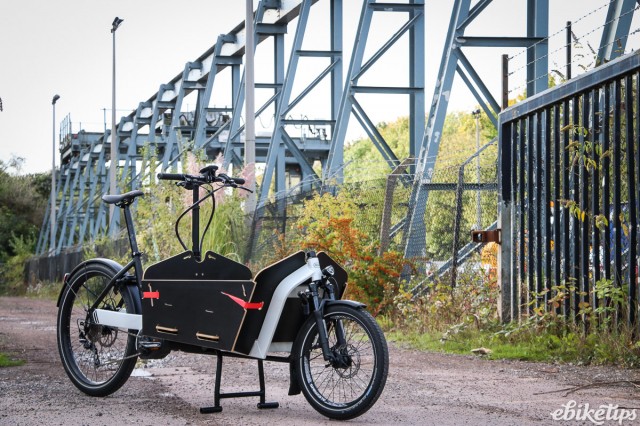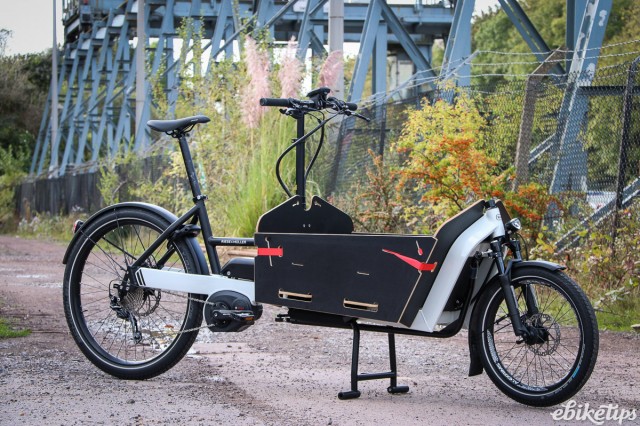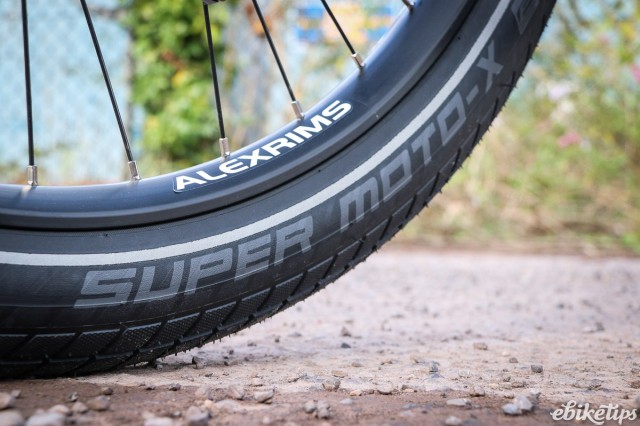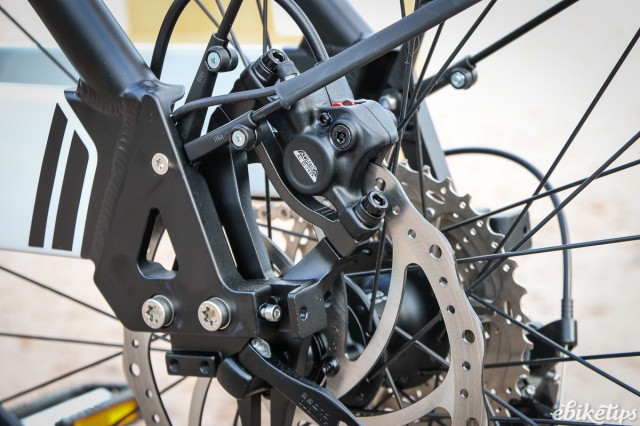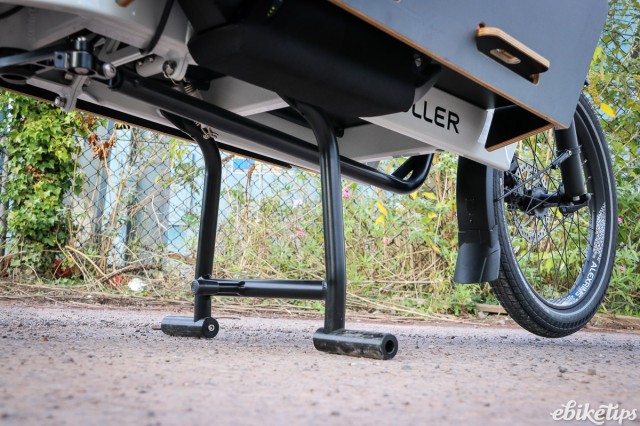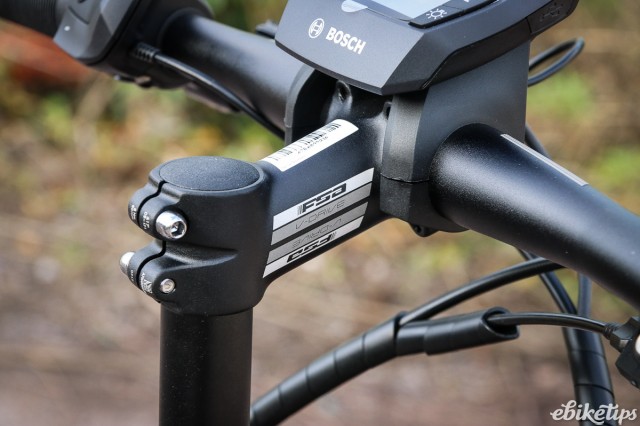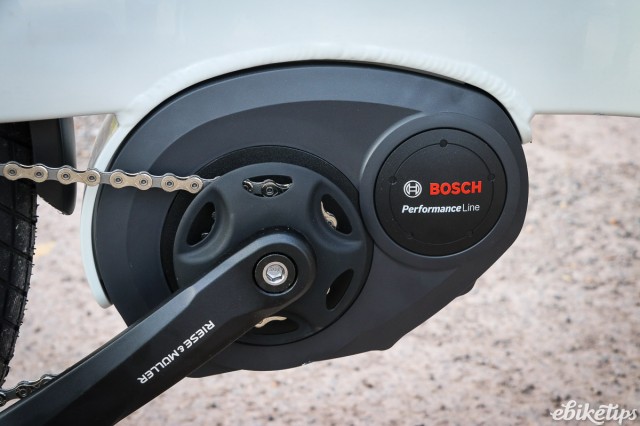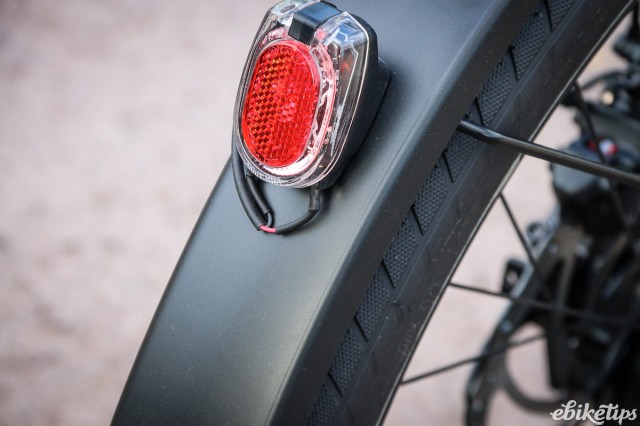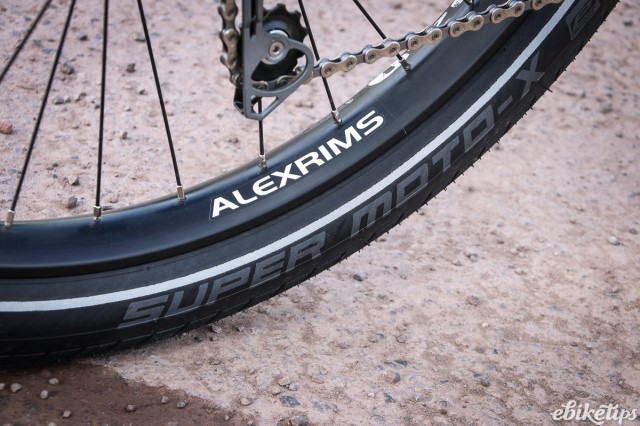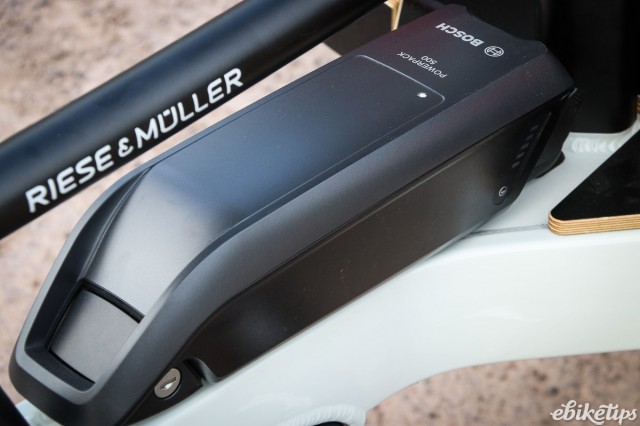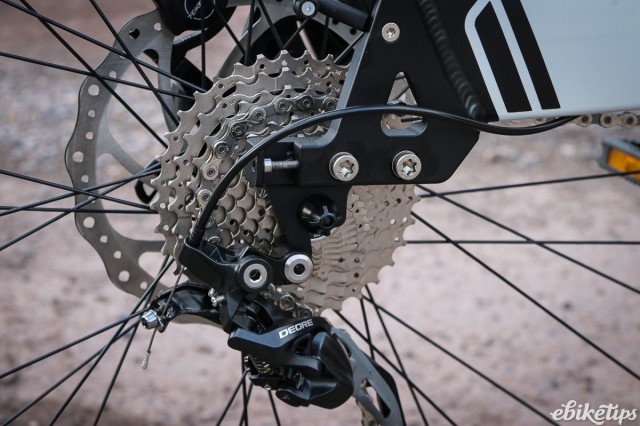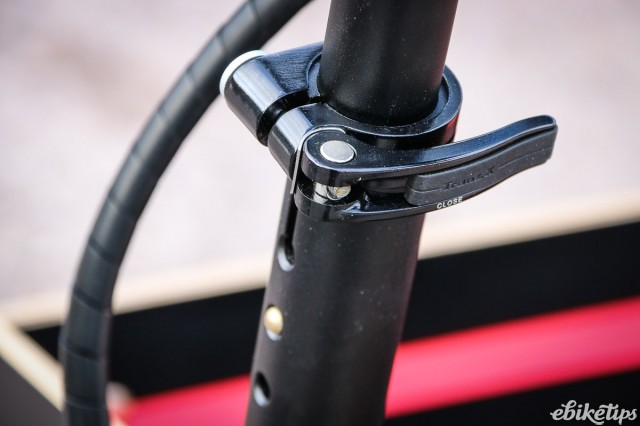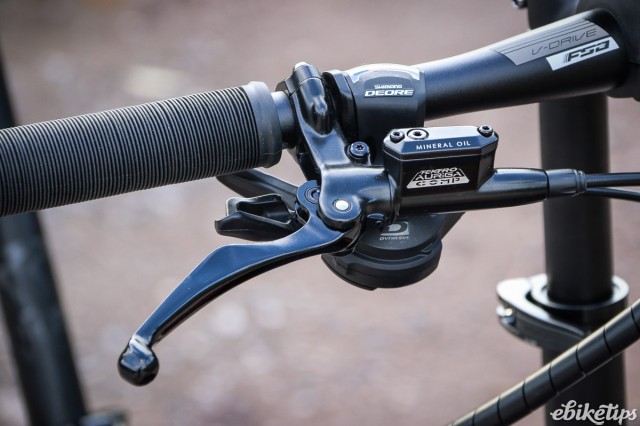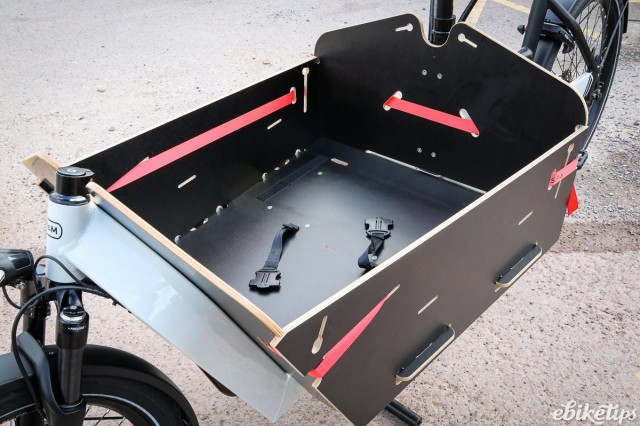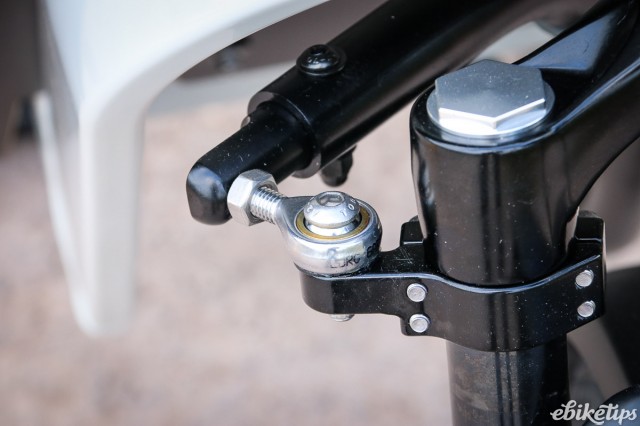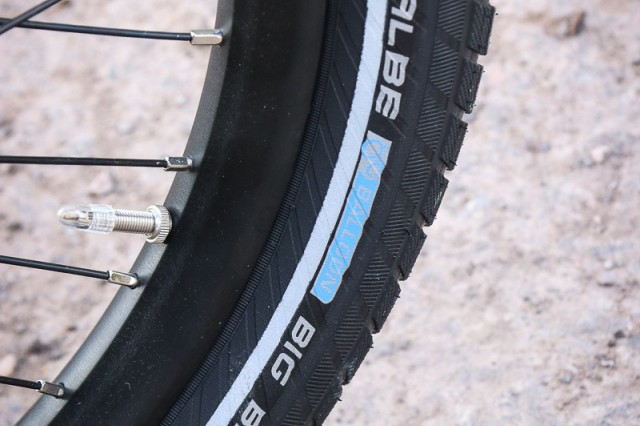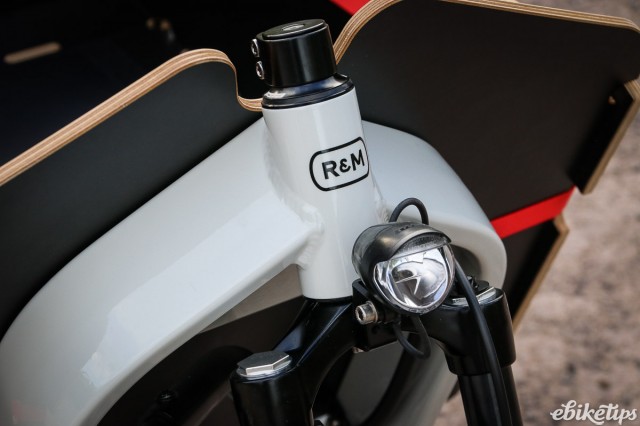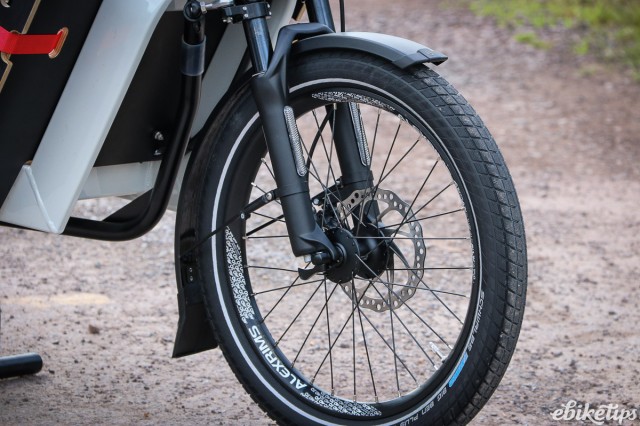Riese und Muller Packster 60 Touring
Overview
- Huge load capacity
- Great motor system with great range from the double battery
- Good quality kit throughout
- Very big and not easy to store
- very heavy if you need to manhandle it
- Size restricts where you can ride it
Five grand is a sum of money you could quite legitimately buy a car for. But this is a bike that's very much designed to replace a car, and certainly won't cost you anything like as much in the long run. It’s a practical and versatile bike with masses of carrying capacity.
The 60 in the name refers to the length of the flatbed cargo area at the front. 80cm and 40cm versions are also available, so this one is in the middle. You can have the bike with just a bare cargo platform if you want. Ours has the optional box, a £225 option, which is held together with a ratchet strap. That might sound a bit Heath-Robinson but it works very well and it’s easy to fit and remove. The sections are flat for easy storage. The Packster uses a chunky linkage system to connect the handlebars to the front wheel, and there's a suspension fork up front to soften up the ride for kids or cargo. A double child seat (with five-point harnesses) and a rain cover are optional extras if you're moving your family around a lot.
Nestling underneath the box is a big kickstand of course, but also a second battery. This bike uses Bosch's DualBattery system and packs two 500Wh PowerPacks for the maximum 1,000Wh capacity. It’s not a cheap upgrade: that second battery costs an extra £810, so you'll have to absolutely sure you'll need it. If you're just commuting or ferrying kids and stuff around town, you probably don't: the single battery should have plenty of juice in it for a normal day. The box and extra battery bring the build total here to £5,084; you can get the base bike for just over £4,000.
Like the Tern GSD cargo bike we recently featured the Packster gets a Bosch Performance Line motor. With 63Nm of torque it should see you right even if you're really loading the bike up, although it's not the most powerful motor that Bosch make. The drivetrain on this bike is a 10-speed Shimano Deore Derailleur; the Packster is also available with a continuously-variable Nuvinci hub transmission.
The Packster is designed for everyday errands, so there's a frame lock through the rear wheel which means you can lock the bike to itself if you're just popping into the shops. It'd be a burly thief that managed to carry it away, but you can buy the bike with a second Abus link lock for extra peace of mind.
The city practicality continues with full mudguards and integrated lighting. A rear rack is a cost option if the big bucket on the front isn't enough space and you want to run panniers too.
Riding the Packster
Jez says: Riding the Packster is different, that's for sure. But at the same time, not that different. Like when you have to drive a van for the first time, expecting it to feel huge, weird and scary, and it mostly feels quite familiar. The Packster is huge, obviously, with an enormous turning circle that catches you out the first couple of times you ride it, but not after that. It is more of an issue when you're stood with the bike, trying to manoeuvre it into a garage or a bike rack.
The very long wheelbase and seat position over the rear wheel gives it a bit of an oil tanker feel, but I found that I accustomed to it after a couple of rides. With a frame made of really huge box section, it is stiff enough that the bike handles predictably, without any of the unwelcome flex that can sometimes affect bikes this long. The steering does feel a bit different to a regular bike, with a linkage that runs forward under the load bay to the front wheel. I couldn't put my finger on exactly how it was different, but the time I noticed it the most was when I took a hand off the bars to signal a turn. The first half a dozen times I got pretty wobbly, but acclimatised after that.
The load carrying capability is immense. For that reason, this is a bike that I could quite seriously consider instead of a second car - although I'm not sure that selling our second car would actually generate enough funds to buy one. I've done full weekly supermarket shops, easily. I did a big tip run, with an old microwave, box of laminate flooring and some heavy rolls of carpet offcuts strapped into the box.
The loadbay has a sticker saying maximum payload 100kg. I've not had that much in, but I'd say I've used it with probably around 50kg in there and it was fine.
I've also tried using it for my 12km commute out of the city and through the countryside. The assistance system makes light work of the stiff hills around Bath; I spent quite a lot of time in Turbo mode which reduces the range quite a bit. It's just not really a bike that you'd ride out of town if you didn't have to, and as with any e-bike the speed limit for help from the motor of 25km/h means that on flat sections a decent cyclist would make faster progress on an unassisted road bike. The work bike racks are down a short flight of stairs at my offices, and that's a very offputting prospect on a bike this big and heavy. I noticed while dragging it back up the stairs that the steering linkage is exposed and perhaps a bit vulnerable under the loadbay.
The spread of gears was enough to get back up reasonable hills fully loaded without breaking a sweat, and the hydraulic brakes worked very nicely too, hauling you to a stop with confidence. Having an adjustable height handlebar as well as saddle is a good idea for families where this could be a car replacement, allowing family members of different heights to use the bike comfortably.
The wide stand which folds down under the loadbay is reassuringly substantial, such that you can prop the bike up with a heavy load onboard, without worrying that it might topple over.
Dave says: This is a very different beast to the Tern GSD that I’ve been riding recently. It’s a huge bike, and as such you really need a garage (or at least a significant amount of space in a shed) to store it. It’s got enough carrying capacity to be a viable car replacement, and I tended to use it more like a car: you need a bit of space so it’s not particularly convenient on shared-use paths, and it’s easier to wait in traffic queues than to filter.
Riding the Packster takes a bit of getting used to, especially from a standing start, but once you’re rolling it’s a pretty easy thing to pilot, even with a big load in the front. The bike feels very stable, and the quality of the linkage system means that the steering never feels vague, although you do have to watch for understeer when the bike isn’t loaded. Generally speaking the Schwalbe tyres are very good though.
The main draw is the load capacity. This is the middle-sized bike and there was no amount of stuff I needed to carry that I couldn’t get in it. A full-sized adult friend fits fine, as does a weekly shop. My two kids (12 and 10) are a bit big to both get in at once (not that it stopped them trying), but there are harnesses and a rain cover available to fit two smaller children side by side. The Packster 40 would probably be enough space for most people who aren’t ferrying other people about.
All the kit on the Packster worked very well. The 1,000Wh battery system means you can get a week of knocking about town done without ever plugging the bike in, although the £810 for a second battery is only really going to be tempting if you’re planning longer trips, or maybe using it as a delivery vehicle. Even with one battery the bike has easily enough range for most city riding that you could manage in a day. Gearing-wise I’d probably spec the Nuvinci hub if I was getting a bike for myself, but I didn’t have any issues with the 10-speed Shimano transmission and the bike had plenty of gear range for hilly Bath.
Overall it’s a really versatile bike. You can ride it every day, throw whatever you need in it and so long as you have somewhere to store it and there aren’t any flights of steps in your normal day, it’s very easy to get on with. £5,000 (or even the £4,000 basic build) is a big investment, but it’s only a year and a half of running a car, and after that you’re saving yourself money.
